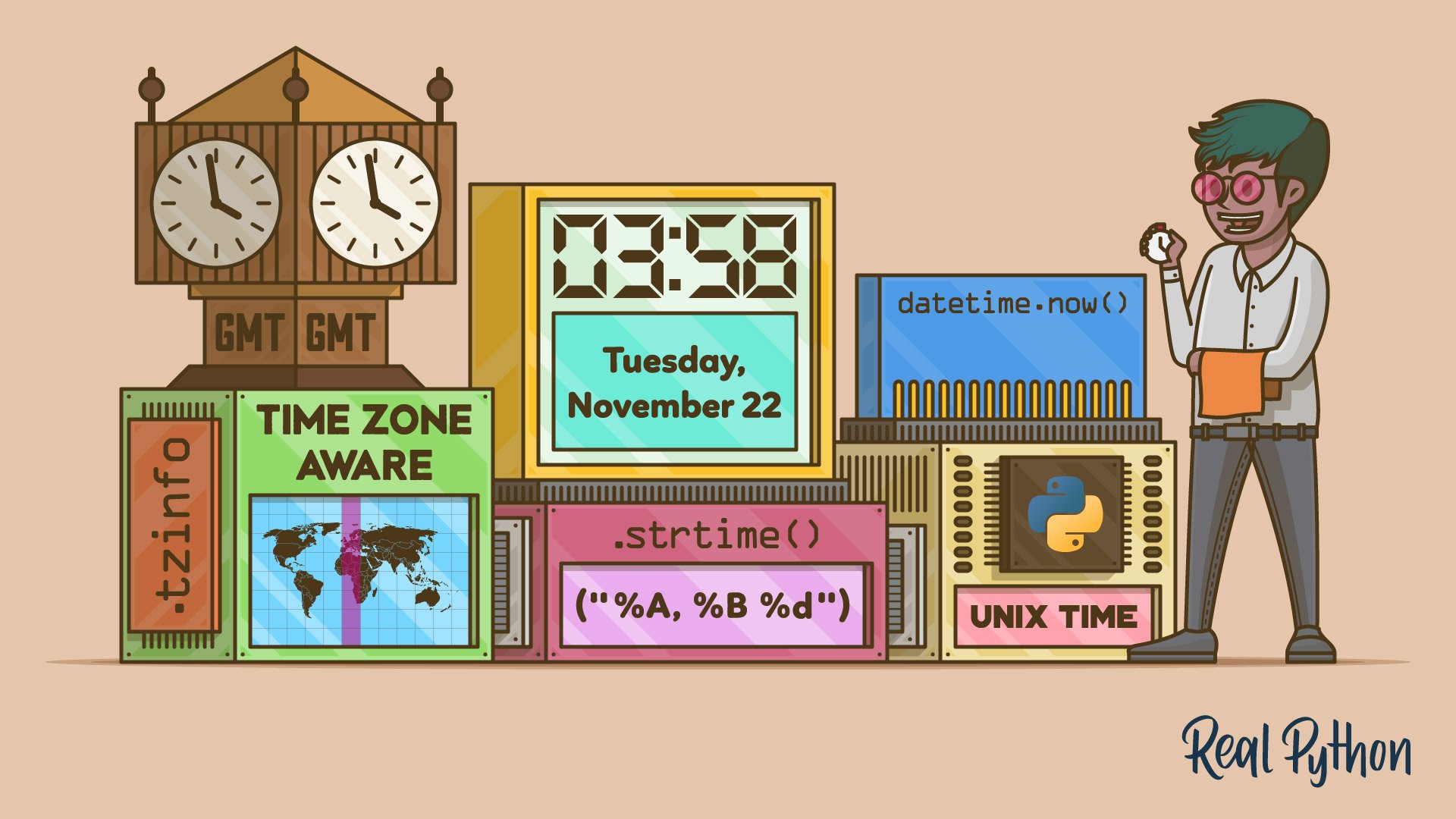time
The Python time module provides various time-related functions. It allows you to work with time in a variety of ways, including getting the current time, measuring execution durations, and working with time in seconds since the epoch (January 1, 1970, 00:00:00 UTC).
Here’s a quick example:
>>> import time
>>> time.time()
1753361956.4005592
Key Features
- Retrieves the current time
- Formats and parses time strings
- Measures elapsed time with high precision
- Pauses execution for a given number of seconds
- Converts between time representations (seconds, tuples, strings)
- Obtains system time in UTC or local time
- Works with monotonic clocks for reliable timing
- Supports sleep with subsecond precision
Frequently Used Classes and Functions
| Object | Type | Description |
|---|---|---|
time.time() |
Function | Gets the current time in seconds since the epoch |
time.sleep() |
Function | Pauses execution for a specified number of seconds |
time.strftime() |
Function | Formats a time tuple as a string |
time.strptime() |
Function | Parses a time string into a time tuple |
time.perf_counter() |
Function | Measures elapsed time with high precision |
time.localtime() |
Function | Converts seconds since epoch to a local time tuple |
time.gmtime() |
Function | Converts seconds since epoch to a UTC time tuple |
time.ctime() |
Function | Converts seconds since epoch to a readable string |
time.monotonic() |
Function | Returns the value of a monotonic clock (can’t go backward) |
time.process_time() |
Function | Returns the CPU process time |
time.asctime() |
Function | Converts a time tuple to a readable string |
time.mktime() |
Function | Converts a local time tuple to seconds since the epoch |
Examples
Get the time since epoch:
>>> import time
>>> time.ctime()
'Thu Jul 24 14:58:22 2025'
Pause execution for two seconds:
>>> time.sleep(2)
Format the current time as a string:
>>> time.strftime(
... "%Y-%m-%d %H:%M:%S", time.localtime()
... )
'2025-07-24 14:58:53'
Measure elapsed time with high precision:
>>> start = time.perf_counter()
>>> time.sleep(1)
>>> end = time.perf_counter()
>>> end - start
1.000123456
Common Use Cases
- Measuring the duration of code execution
- Formatting and displaying the current date and time
- Scheduling tasks or delays at specific intervals
- Converting between different time representations
- Benchmarking and profiling code performance
- Implementing retries with delays
- Creating timeouts or intervals in programs
- Simulating delays in tests, scripts, or teaching examples
- Generating timestamps for logs or filenames
Real-World Example
Suppose you want to measure the execution time of a block of code to optimize performance. Here’s how you can achieve that using the time module:
>>> import time
>>> def long_running_task():
... time.sleep(2)
...
>>> start = time.perf_counter()
>>> long_running_task()
>>> end = time.perf_counter()
>>> elapsed_time = end - start
>>> print(
... f"The task took {elapsed_time:.2f} seconds."
... )
The task took 2.00 seconds.
In this example, the time module helps you measure how long a task takes to execute, which is valuable for performance tuning and optimization.
Related Resources
Tutorial
How to Get and Use the Current Time in Python
In this tutorial, you'll be getting the current time in Python. You'll get your hands on a datetime object that represents the current time. You'll see how to format it according to international standards, and you'll even check out how computers represent time.
For additional information on related topics, take a look at the following resources:
By Leodanis Pozo Ramos • Updated July 24, 2025

